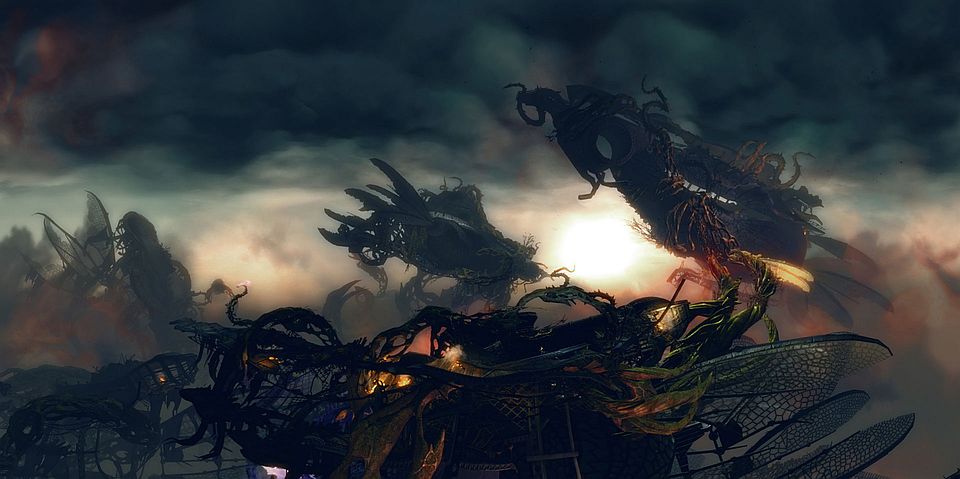The massively multiplayer online roleplaying game (MMORPG) genre of game has been a mainstay of PC game profits for over a decade, but those revenues certainly haven’t been evenly distributed. The segment has mostly transitioned from a subscription model to free-to-play (with Blizzard’s World of Warcraft as the exception), but many new entries in the field have struggled. One standout continues to be ArenaNet’s Guild Wars 2, which uses a hybrid business model of a one-time payment with in-game purchases. The game has seen regular content added, and now the new Heart of Thorns expansion will be a significant addition. ArenaNet’s head of global communications Meelad Sadat gave [a]listdaily some insights into the game and its marketing strategy in this exclusive interview.
 Meelad Sadat
Meelad Sadat
Guild Wars 2 has its first expansion, Heart of Thorns, coming up, nearly three years since the game launched. Why now, and why a full expansion, when the game has been getting regular content updates?
ArenaNet developed an interesting strategy almost immediately after launch in the way they update Guild Wars 2, and it’s rooted in this philosophy that the studio has to continually try to challenge traditional MMO conventions. Since launching in 2012, players have received more than 40 updates to the game. There have been traditional feature pack releases, and these were mostly about adding new features and improvements to in-game systems. The really innovative part of it has been with Living World releases. These have made up the majority of the updates. Living World is where ArenaNet continues to grow the Guild Wars 2 universe episodically, where during active “seasons,” players get releases with new game play, story and rewards every two weeks. These have introduced new character arcs, established storyline plants with payoffs between episodes, and even set up cliffhangers during key moments, all very much like a TV series.
All of these releases have been free of charge — players who buy the game get access to live updates without paying a penny. Over time it became more apparent that players want — and I’m quoting our devs here — the “occasional check in with me moment” where a lot of different parts of the game grow at once. That’s what led to the expansion, where the team is now preparing to release new content that goes way beyond adding a slice of new game play. Heart of Thorns is going introduce significant new features that touch on every core pillar of Guild Wars 2 and even redefine some key areas of the game such as how max level characters continue to progress.
What’s the Guild Wars 2 audience size now, and how is it distributed geographically? Does the audience continue to grow?
We launched in China last year, which puts us in three regions currently including North America and Europe. China is obviously a huge milestone in growing the game. The game is in great shape. It’s benefiting from not just a happy and healthy player base who’ve embraced what we’re telling and showing them about Heart of Thorns but also a surge of new players since announcing the expansion. Overall, I think the best barometer for Guild Wars 2′s success is how ArenaNet has grown as a studio — with staff growing some six-fold since the launch of the first Guild Wars — and the talent, resources and support it’s able to put behind both the current game and the expansion.

Guild Wars 2 uses the pay for the game up front, play for free model, with various in-game spending options. How do you feel this compares to the classic subscription model or the free-to-play model?
It’s the right model for how Guild Wars 2 launched, and testament to that is the success the game has had since. ArenaNet has been able to continue to grow the base game and now support an expansion for it. Let’s also look at player behavior under this model — they continue to play because of the compelling content they get. There’s no pressure to log in because they’re not paying for it monthly. On the flip side, there’s no pressure to opt out for every period of time they can’t keep playing. That’s not to say the other business models don’t have their merits. They certainly work for other games, whether MMO or other genres. There’s plenty of evidence to support that.
As a whole it’s what I think we’re discovering is one of the evolving natures of entertainment. Entertainment is expendable; people partake in it because they want it, not because they need it. So it’s only natural to have choices in the way we consume it, as well as have different models for different types of entertainment rather than force everything into a single delivery mechanism. Music found this out the hard way. Now television subscription services are starting to discover it.
What are the key areas for your marketing efforts over the next year?
I work primarily in earned and owned media and so I can speak to what we’re focusing on there. It’s all about finding ways to engage with fans and giving them reasons to engage with us when they’re not playing the game. We look to them to play a big part in exposing Guild Wars 2 and all of the reasons they play it as a means to get potential new players interested. This is the most powerful way to keep a game like ours relevant. And we’re constantly trying to turn influential gamers — press, Twitch streamers, YouTubers — into players. It’s great when we can get exposure for something we’re doing through these folks because they want to follow a big MMO like ours, or find some piece of news or information we put out interesting, or partner with us on a program or promotion. But if we can get them genuinely engaged and playing the game, then that’s what we want. Fortunately for us — and with all the credit going to the talented game makers at ArenaNet — Tyria is a hard place to leave once you’ve paid a visit.
What’s your best advice for game marketers, particularly regarding MMO’s, in this rapidly changing environment?
There’s a new groove in game marketing. Like you said, we had this tumultuous period when it seemed different parts of the industry all seemed to be going through changes at once. I think I need to use the word disruptions here. The audience for games went through some splintering, mainly with digital and mobile games taking hold, and that seemed to have the same effect on where people went for their information on games. Suddenly there were questions about why big traditional PR outlets weren’t moving the needle like they used to, and pretty soon we were seeing the same thing with big social media sites. But we’re back in a groove. Nothing is dying — the influence of game press isn’t going away. Social media may be getting staid as a term but the essence of what it stands for — communities developing around shared interests and a mechanism for many to many communication — is going to be relevant as long as people like socializing with one another and there’s a free and open internet that lets them do that unhindered.
I think it’s more important to be cognizant of the subtleties of what’s changed. For instance with game press, there’s still a significant audience for the big game sites, it’s just that gamers process the information they get there differently. What a game site prints about a game I might be interested in is now just part of a larger framework of what I’m going to ingest before I make a decision about that game. There’s also this huge and healthy appetite for raw information. What’s a better way to evaluate a game, a slickly produced trailer with all the highlights — and believe me, I love a good trailer — or watching a live stream of the game on Twitch The latter gives me the raw deal and lets me know if this is a game for me. So I’ll discover the game through a trailer or a big piece of press coverage but if it I’m still interested, I’m going to look for the most raw information I can find on it. That’s what all of us in game marketing need to understand.
Our predecessors had it good — they put out a great box with three killer screen shots on the back, got press excited about a game with carefully orchestrated previews, and put out a great TV spot if they had the budget, and we’d all line up. Now you have to factor in all of the channels there are for finding out if a game is really all it says it can be. We can’t control what goes out through all of these channels, nor should we. But we better have a handle on what’s out there.

